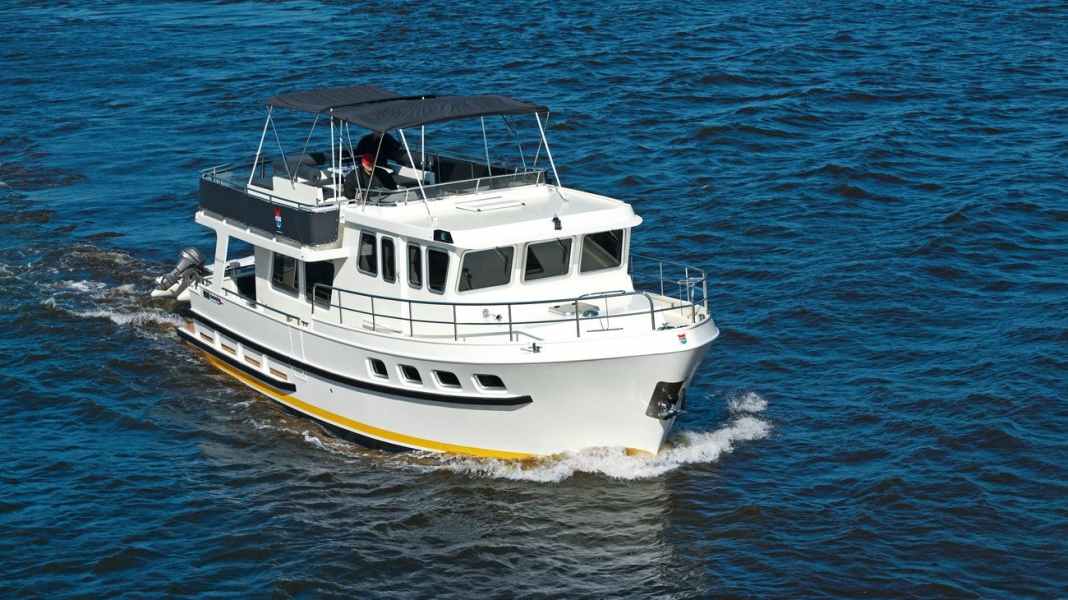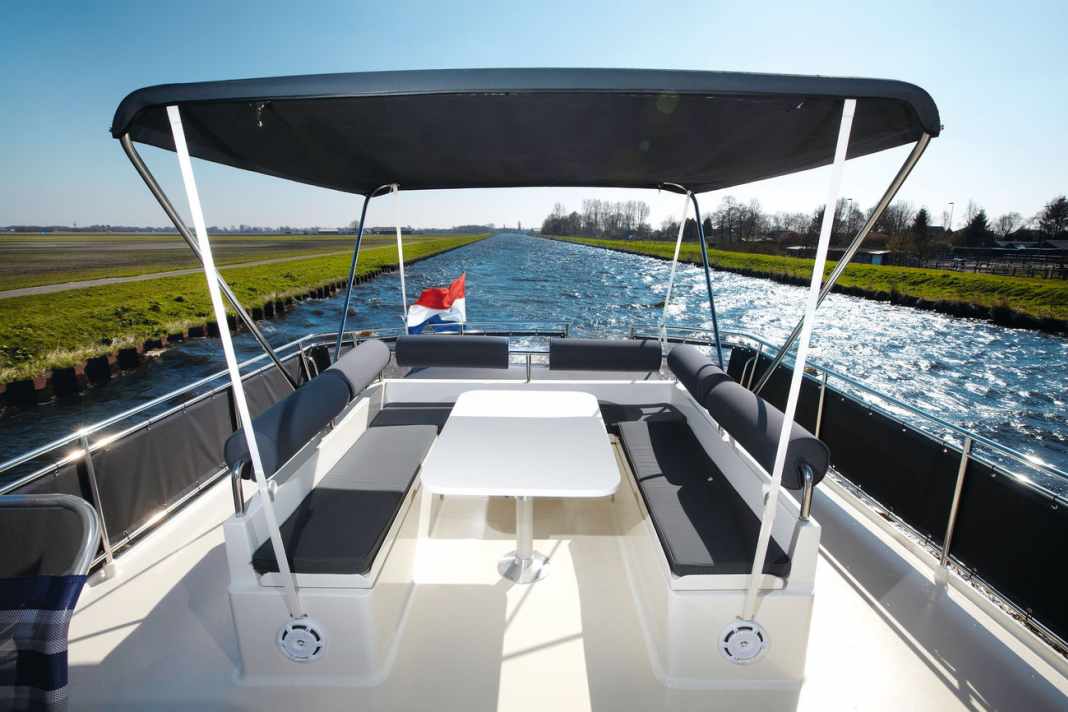Test: Pedro Bora 43 - Solid displacer

The crisis years from 2008 onwards also took their toll on the boat industry, including the Dutch steel boat manufacturerPedrowho had to close his shipyard halls in the meantime. The new start began with refits, used boat trading, winter storage hire and boat-related work.
The owner has several floor plans to choose from
However, enquiries from former customers quickly revealed that Pedro boats were also in demand as newbuilds, and so the shipyard gradually started building yachts based on the old cracks again, including our test boat, the Pedro Bora 43'. A trawler that promises huge open-air fun with its flybridge and offers overnight accommodation for four people with two sleeping cabins below deck






They all lie on cosy cushions; however, only the double berth in the forward cabin has a slatted frame for full comfort. This makes it clear that theOwner couple in the bow especially as steps next to the berth make it easier to get in and out.
A Pedro as you know it
The bunk in theUnderfloor cabin with a size of 1.95 m x 1.50 m is not small either; however, you have to make do with a headroom of about 0.75 m directly above the bunk and be careful when crawling into bed from the 1.90 m headroom in the entrance area.
The forward cabin also has more to offer in terms of ventilation and visibility to the outside, as it providessix portholes andCeiling hatch and deck ventilator for comfort, while there is only one porthole in the centre cabin. Opposite the centre cabin, the designer has accommodated the well-organised wet room. Speaking of layout: the owner of the Bora can choose betweendifferent floor plans The shipyard also offers customised solutions.
In our test boat, a staircase leads up from the cabin area to the saloon. Here there is an L-shaped bench seat aft (can also be used as a single berth) and next to it thePantry. The kitchenette is well organised and has everything you need for a meal. However, you don't eat at the rear seating area, but at a large dining area at the front next to the driving position.
Needs getting used toThe standing height of around 1.50 m in the dining area. Next to the dining area is the first staircase to theFlybridgeIt is one size more comfortable than the second ladder access at the stern, which starts at the bathing platform. The platform can be accessed safely and conveniently via two entrances with high doors. The "main user" of the platform on our test boat was a dinghy in a special holder.
You can sail the Pedro either from the saloon helm or from the flybridge, from which you have a good view forwards and to the side. BothDriving stands are intended for free-standing chairs, but these were not yet on board our test boat. The instrumentation and control unit consist mainly of modern touchscreen displays, which are easy to read at both helm stations. The driver can operate the rudder and single-lever controls from a standing position without any restrictions.
Practical: the large door next to the driving position in the saloon. It provides direct access to the side deck, which makes mooring manoeuvres particularly easy.
To ensure that the latter function accurately and safely, our Pedro was equipped withBow and stern thruster equipped. During fast manoeuvres, the hull behaves like a displacement boat, leaning on the outside of the curve and swinging easily into the self-generated wave. For these manoeuvres, the skipper needs between 1.5 and 2 boat lengths to steer out of the tight gybe.strong arms. "That's because of the large rudder blade," explains André van der Velde jr, Technical Manager at Pedro. "With a smaller blade, you wouldn't be able to make such tight turns."
So that straight-ahead travelstress-free the motto is: let it level out and only compensate a little. The most comfortable way to do this is to use theAutopilots.
A quietMarching trip (65 dB/A) the boat makes a good 7 kn at just under 2000 rpm. Then easilyReach of more than 600 nm plus 15 %. Canal drivers can even travel more than 2000 nm on one tank of fuel.
The safest way to enter the boat is via the aforementioned bathing platform or the doors in the bulwark. Non-slip floor structures and the solid handholds provide a high degree of safety.Movement safety. The fire extinguishing system in the engine compartment plus manual fire extinguisher is standard, but a powerful manual bilge pump is not. TheOperational safety of the motor is ensured by clean and fixed installations and a fuel system with stopcock, copper pipes or (except for the connection to the motor with only one screw clamp) crimped hose connections.
With theFilter system we would also like to have an electric alarm that signals in good time if there is too much water in the filter. Both the filter and the engine can be accessed via flaps in the saloon floor; a section of the seat bench has to be removed in a few simple steps beforehand. The clean protective coating and the insulation in the engine compartment are just as impressive as (almost) the entire finish.
Conclusion
The Bora 43′ is a rock-solid displacement boat and a Pedro as we know it. It offers enough space for four people to travel in comfort. These may well be longer, for example to islands such as Bornholm. Apart from the missing manual bilge pump, the standard equipment is also impressive.
Data sheet: Pedro Bora 43`
Shipyard: Pedro
Type designation: Pedro Bora 43`
CE category: B - Outside coastal waters
Length: 12,95 m
Width: 4,40 m
Displacement: 17,50 t
Price: 441.666,00 €

